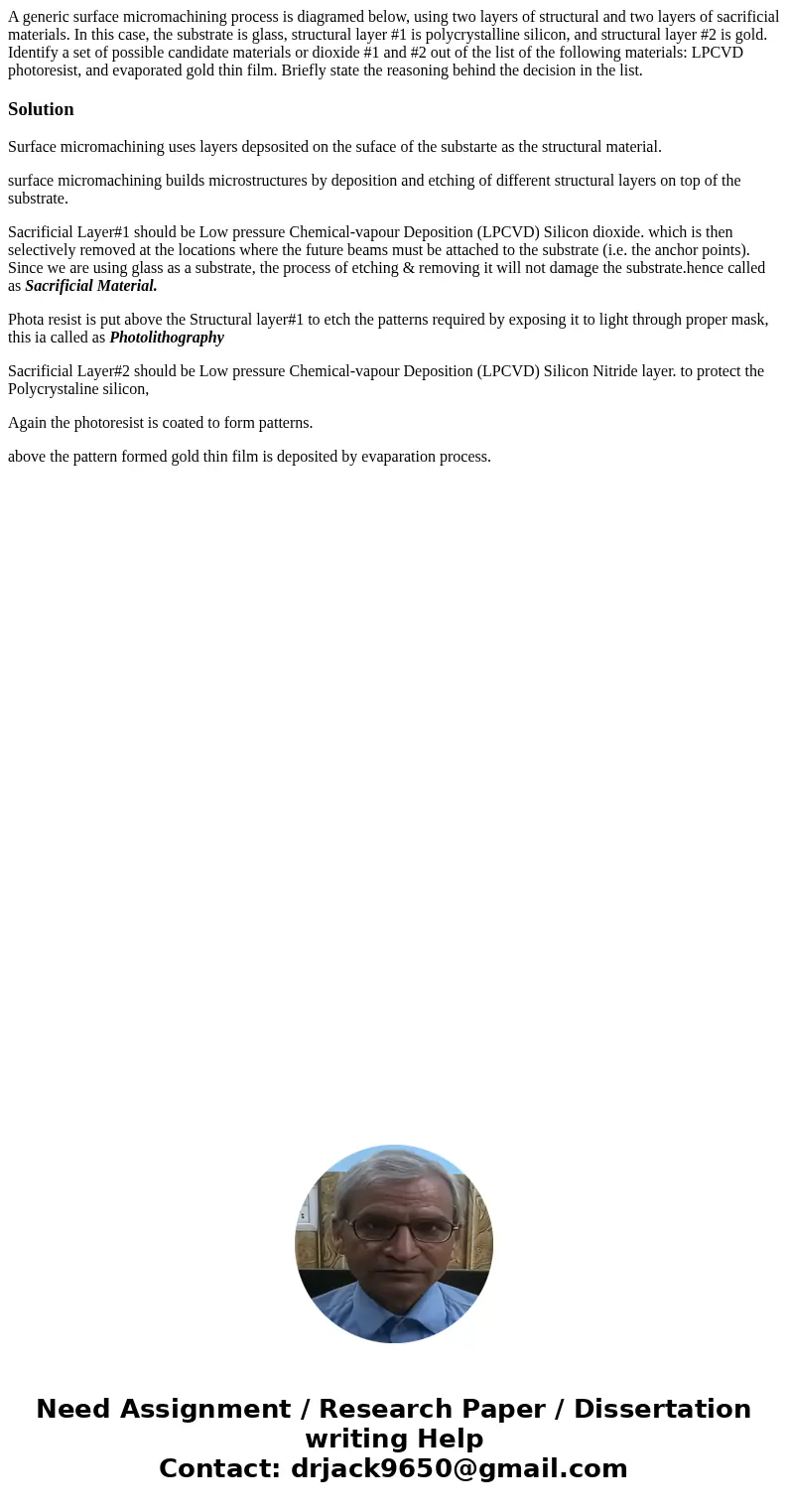A generic surface micromachining process is diagramed below
Solution
Surface micromachining uses layers depsosited on the suface of the substarte as the structural material.
surface micromachining builds microstructures by deposition and etching of different structural layers on top of the substrate.
Sacrificial Layer#1 should be Low pressure Chemical-vapour Deposition (LPCVD) Silicon dioxide. which is then selectively removed at the locations where the future beams must be attached to the substrate (i.e. the anchor points). Since we are using glass as a substrate, the process of etching & removing it will not damage the substrate.hence called as Sacrificial Material.
Phota resist is put above the Structural layer#1 to etch the patterns required by exposing it to light through proper mask, this ia called as Photolithography
Sacrificial Layer#2 should be Low pressure Chemical-vapour Deposition (LPCVD) Silicon Nitride layer. to protect the Polycrystaline silicon,
Again the photoresist is coated to form patterns.
above the pattern formed gold thin film is deposited by evaparation process.

 Homework Sourse
Homework Sourse